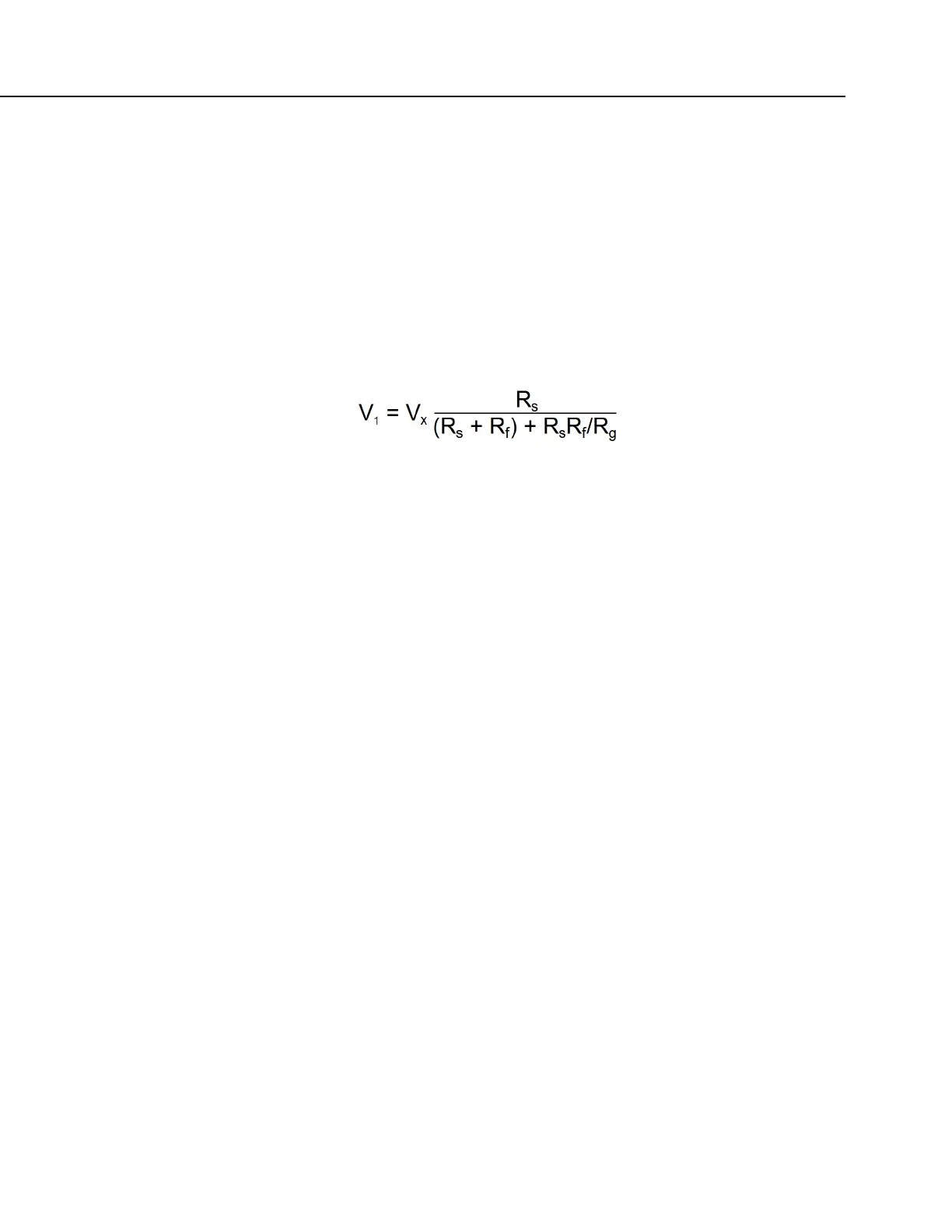Section 7. Installation
potentials at the two instruments. For this reason, a differential measurement
should be made on the analog output from the external signal conditioner.
7.3.4 Ground Looping in Ionic Measurements
When measuring soil-moisture with a resistance block, or water conductivity with
a resistance cell, the potential exists for a ground loop error. In the case of an
ionic soil matric potential (soil moisture) sensor, a ground loop arises because soil
and water provide an alternate path for the excitation to return to CR800 ground.
This example is modeled in the diagram Model of a Ground Loop with a Resistive
Sensor
(p. 102). With R
g
in the resistor network, the signal measured from the sensor
is described by the following equation:
where
V
x
is the excitation voltage
R
f
is a fixed resistor
R
s
is the sensor resistance
R
g
is the resistance between the excited electrode and CR800 earth ground.
R
x
R
f
/R
g
is the source of error due to the ground loop. When R
g
is large, the error
is negligible. Note that the geometry of the electrodes has a great effect on the
magnitude of this error. The Delmhorst gypsum block used in the Campbell
Scientific 227 probe has two concentric cylindrical electrodes. The center
electrode is used for excitation; because it is encircled by the ground electrode, the
path for a ground loop through the soil is greatly reduced. Moisture blocks which
consist of two parallel plate electrodes are particularly susceptible to ground loop
problems. Similar considerations apply to the geometry of the electrodes in
water conductivity sensors.
The ground electrode of the conductivity or soil moisture probe and the CR800
earth ground form a galvanic cell, with the water/soil solution acting as the
electrolyte. If current is allowed to flow, the resulting oxidation or reduction will
soon damage the electrode, just as if dc excitation was used to make the
measurement. Campbell Scientific resistive soil probes and conductivity probes
are built with series capacitors to block this dc current. In addition to preventing
sensor deterioration, the capacitors block any dc component from affecting the
measurement.

